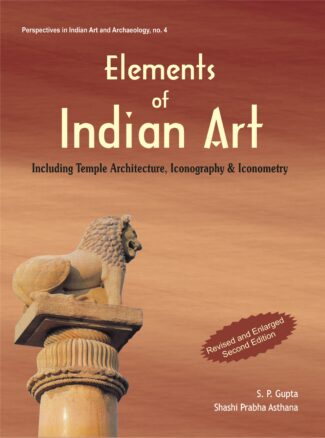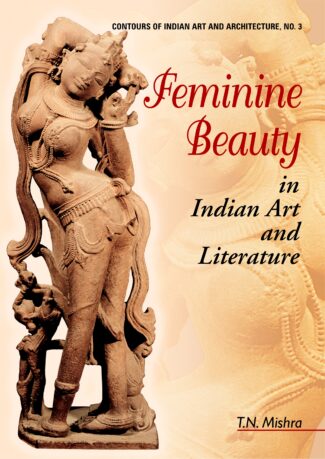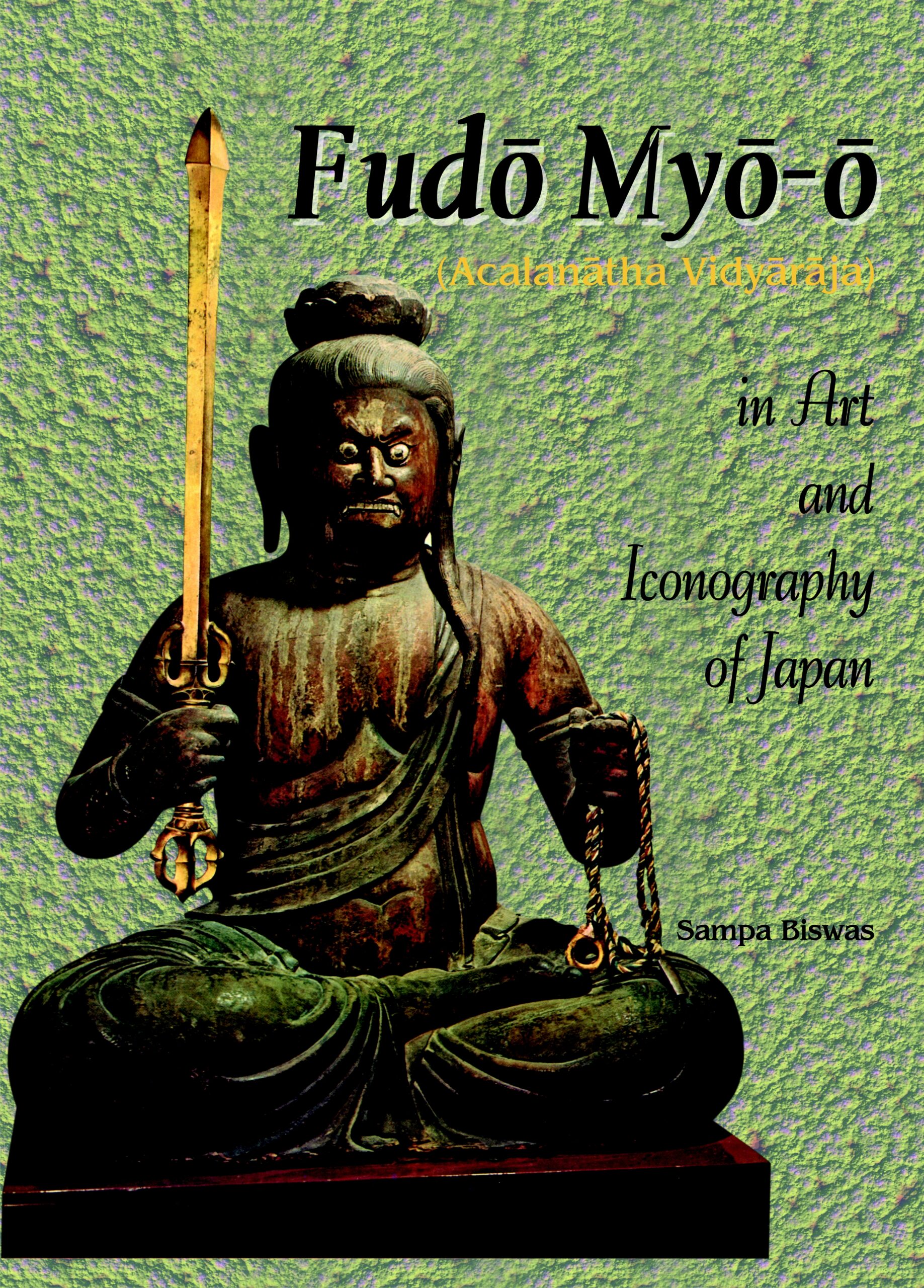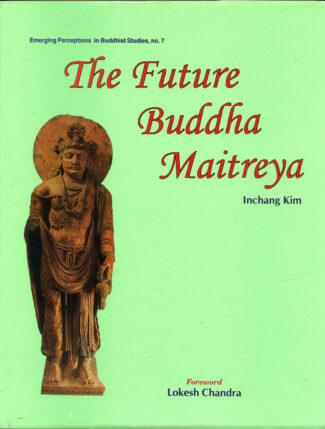Showing 41–50 of 147 results

Physical postures (asanas) are the most important and often the only constituent of modern Yoga. Many practitioners believe that the postures derive from an ancient original set of eighty-four asanas. This book, for the first time, traces traditions of eighty-four postures by examining original materials, including drawings, descriptions in older Indic texts and modern publications which reflect contemporary traditions. It also takes up a number of broad issues related to the topic of Yoga postures so as to provide the reader with a larger context.
Physical postures (àsanas) are the most important and often the only constituent of modern Yoga. Many practitioners believe that the postures derive from an ancient original set of eighty-four àsanas. This book, for the first time, traces traditions of eighty-four postures by examining original materials, including drawings, descriptions in older Indic texts and modern publications which reflect contemporary traditions. It also takes up a number of broad issues related to the topic of Yoga postures so as to provide the reader with a larger context.

Physical postures (asanas) are the most important and often the only constituent of modern Yoga. Many practitioners believe that the postures derive from an ancient original set of eighty-four asanas. This book, for the first time, traces traditions of eighty-four postures by examining original materials, including drawings, descriptions in older Indic texts and modern publications which reflect contemporary traditions. It also takes up a number of broad issues related to the topic of Yoga postures so as to provide the reader with a larger context.
Physical postures (àsanas) are the most important and often the only constituent of modern Yoga. Many practitioners believe that the postures derive from an ancient original set of eighty-four àsanas. This book, for the first time, traces traditions of eighty-four postures by examining original materials, including drawings, descriptions in older Indic texts and modern publications which reflect contemporary traditions. It also takes up a number of broad issues related to the topic of Yoga postures so as to provide the reader with a larger context.

The work studies basic principles of ancient Indian art and architecture. It deals with Hindu thinking and practice of art including the Hindu view of Godhead, iconography and iconometry and symbols and symbolism in Hindu art. It surveys Indian art and temple architecture from the ancient times and makes comparative studies of religious art in India.
The book is a study of the fundamental principles of ancient Indian art and architecture, dealing with essentials of Hindu thinking and practice of art like the Hindu view of Godhead, iconography and iconometry, and symbols and symbolism in Hindu art. Referring to major classical Indian literary works shedding light on art and architecture, it undertakes a survey of Indian art and temple architecture from the 3rd century bc through the medieval period, highlighting the directional changes that marked the history of art, specifically sculpture and painting. It elaborately views the various terms and concepts associated with the field of art and iconography like mudras, asanas, pithas, explaining the nature of Buddhist and Jain deities as well as those of Hindu sects like Saivism, Vaisnavism and Saktism. Pointing out the importance of studying Hindu temple architecture in order to fully appreciate Hindu art which was meant for propagation of dharma, it analyses the basic features of the temple architecture and its regional variants. Tracing the differences in conception and delineation of a Hindu temple, a Muslim mosque and a Christian church, the research focuses particularly on the principles of visualisation of symbols and signs in Hinduism and Christianity. It also reveals how the West has viewed Indian literature and art, exposing the inner contradictions of some European thinkers who while praising literary works of Kalidasa and others condemned the Hindu images. The work contains more than 200 illustrations, half-tone and line drawings, that make the discussion easy to comprehend for a range of readers — scholars, students as well as laymen

The work studies basic principles of ancient Indian art and architecture. It deals with Hindu thinking and practice of art including the Hindu view of Godhead, iconography and iconometry and symbols and symbolism in Hindu art. It surveys Indian art and temple architecture from the ancient times and makes comparative studies of religious art in India.
The book is a study of the fundamental principles of ancient Indian art and architecture, dealing with essentials of Hindu thinking and practice of art like the Hindu view of Godhead, iconography and iconometry, and symbols and symbolism in Hindu art. Referring to major classical Indian literary works shedding light on art and architecture, it undertakes a survey of Indian art and temple architecture from the 3rd century bc through the medieval period, highlighting the directional changes that marked the history of art, specifically sculpture and painting. It elaborately views the various terms and concepts associated with the field of art and iconography like mudras, asanas, pithas, explaining the nature of Buddhist and Jain deities as well as those of Hindu sects like Saivism, Vaisnavism and Saktism. Pointing out the importance of studying Hindu temple architecture in order to fully appreciate Hindu art which was meant for propagation of dharma, it analyses the basic features of the temple architecture and its regional variants. Tracing the differences in conception and delineation of a Hindu temple, a Muslim mosque and a Christian church, the research focuses particularly on the principles of visualisation of symbols and signs in Hinduism and Christianity. It also reveals how the West has viewed Indian literature and art, exposing the inner contradictions of some European thinkers who while praising literary works of Kalidasa and others condemned the Hindu images. The work contains more than 200 illustrations, half-tone and line drawings, that make the discussion easy to comprehend for a range of readers — scholars, students as well as laymen

With about 8,000 articles, this Encyclopaedia presents a panorama of Buddhist deities, demigods, godlings, demons the whole range of good and evil forces with the spotlight on the concretized, recognizable forms and their subtle symbolism.
Beginning with a few aniconic symbols, like foot prints, a throne, the Bo tree or stupas, in the prechristian Indian art, Buddhism came to evolve a variety of picturesque representations of a Self-Existent, Superimmanent Principle: in myriad forms and emanations that range from the superbly magnificent to sheerly grotesque. Endowed with diverse iconographic attributes, Buddhist deities/saints/demons have grown, over the rolling centuries, into bewildering numbers, legions. Which all, leave alone the neophytes, not even the best of scholars can recognize! The names of the divinities and their cultural/regional perceptions owing largely to the plurality of Buddhist pantheons, have only gone on to further complicate their identification. Unveiled, for the first time, in the pages of this Encyclopaedia, is a panorama of Buddhist deities, demigods, godlings, saints and demons, with spotlight on the concretized, recognizable forms and the subtle symbolism they involve. In its nearly 8000 alphabetically arranged articles of varying lengths, it mixes gods and demons, bhiksus and btsans, the aesthetic and the grotesque in fact, nearly the whole range of good and evil forces which the inspired among the adherents of the Buddhist faith conceived so ingeniously! Professor Bunce has painstakingly marshalled a wealth of data from authoritative language sources, notably, Sanskrit, Pali, Tibetan, Newari/Nepalese, Chinese, Mongolian, Japanese, Siamese/Thai, Annamese/Viet Namese, Javanese, and Sinhalese, in his effort to capture almost the entire framework of Buddhist divinities: a multi-pantheonic framework, together with its classes, groups and hierarchies, ranging from Adi-Buddha to Arhats and yet beyond. Himself a distinguished scholar of Oriental/Buddhist Art, Dr. Bunce incorporates, in scrupulous detail, the iconographic attributes of deities: like colours, heads/eyes, hands, objects held, body, feet, asanas, mudras, ornaments, vahanas, emanations, and whether calm or wrathful which, with a generous supplement of illustrations: about 300 elegant line-drawings and several colour plates, highlight the distinctiveness of each individual figure. Also included in the Encyclopaedia are users guide, glossaries (of asanas, mudras and attributes), identification charts, a hierarchic table, and bibliographic references. Growing from years of Professor Bunces persevered research and study, this compilation is certainly the first ever to draw together most of the Buddhist divinities/mythological characters, in their distinctly recognizable forms. And is, therefore, indispensable to both the specialists and non-specialists trying to identify each from a whole host of these figural representations.

It studies iconic representations of gods, godlings, demons, witches and tyrants of Hindu mythology, focussing on the concretized form of each pantheonic figure and exploring the iconic language of Hindu images.
Beginning with a few aniconic symbols, like foot prints, a throne, the Bo tree or stupas, in the prechristian Indian art, Buddhism came to evolve a variety of picturesque representations of a Self-Existent, Superimmanent Principle: in myriad forms and emanations that range from the superbly magnificent to sheerly grotesque. Endowed with diverse iconographic attributes, Buddhist deities/saints/demons have grown, over the rolling centuries, into bewildering numbers, legions. Which all, leave alone the neophytes, not even the best of scholars can recognize! The names of the divinities and their cultural/regional perceptions owing largely to the plurality of Buddhist pantheons, have only gone on to further complicate their identification. Unveiled, for the first time, in the pages of this Encyclopaedia, is a panorama of Buddhist deities, demigods, godlings, saints and demons, with spotlight on the concretized, recognizable forms and the subtle symbolism they involve. In its nearly 8000 alphabetically arranged articles of varying lengths, it mixes gods and demons, bhiksus and btsans, the aesthetic and the grotesque in fact, nearly the whole range of good and evil forces which the inspired among the adherents of the Buddhist faith conceived so ingeniously! Professor Bunce has painstakingly marshalled a wealth of data from authoritative language sources, notably, Sanskrit, Pali, Tibetan, Newari/Nepalese, Chinese, Mongolian, Japanese, Siamese/Thai, Annamese/Viet Namese, Javanese, and Sinhalese, in his effort to capture almost the entire framework of Buddhist divinities: a multi-pantheonic framework, together with its classes, groups and hierarchies, ranging from Adi-Buddha to Arhats and yet beyond. Himself a distinguished scholar of Oriental/Buddhist Art, Dr. Bunce incorporates, in scrupulous detail, the iconographic attributes of deities: like colours, heads/eyes, hands, objects held, body, feet, asanas, mudras, ornaments, vahanas, emanations, and whether calm or wrathful which, with a generous supplement of illustrations: about 300 elegant line-drawings and several colour plates, highlight the distinctiveness of each individual figure. Also included in the Encyclopaedia are users guide, glossaries (of asanas, mudras and attributes), identification charts, a hierarchic table, and bibliographic references. Growing from years of Professor Bunces persevered research and study, this compilation is certainly the first ever to draw together most of the Buddhist divinities/mythological characters, in their distinctly recognizable forms. And is, therefore, indispensable to both the specialists and non-specialists trying to identify each from a whole host of these figural representations.
Any discourse on Indian philosophy has to be taken out of the box in which it was confined for ages using obsolete methods for evaluating thinking patterns. In the traditional way of analysing Indian philosophy there was an inimical approach to each other between the philosophers and the philologists, and between the Sanskrit tradition-oriented philosophers and modern English/vernacular-based philosophers. This friction is evident in the hesitation of the traditionalists in giving philosophers like Daya Krishna and K.C. Bhattacharyya their due share.
The twelve essays in this volume address many a question about the characteristics of Indian philosophical traditions and Indian-ness. Indian philosophy is essentially not Sanskrit based alone, there is a significant contribution to it from the South Asian languages and English, and the cultures of the subcontinent. It attempts to provide provocative insights in sharing the author’s penetrative acumen both in his traditional and modern approaches to South Asian intellectual systems. It therefore addresses the prejudice between the East and the West, and traditional and modern, and the concerns of South Asian diaspora in the Western countries.
As far as this anthology is concerned, the icing on the cake is the Foreword by Dr Mrinal Kaul, who critically analyses the major developments taken place in the realm of Indian philosophy in the last few decades, critically appreciating the contents.

The book is a study of Indian art, iconography and sculptures representing devotion, love, human moods and sentiments, especially in its depiction of female sculptures on ancient temples covering famous temple of Khajuraho, Bhubaneswar, Pura, Konark, Nagda, Belur, Halebid, Ajanta and Ambarnath of various dynasties.
The book is a study of Indian art representing devotion, love, human moods and sentiments, especially in its depiction of female sculptures on ancient temples. It begins with a discussion on Indian art as synthesis of the sublime in nature and the human physical form that conveys the sublime. With numerous illustrations of art, iconography and sculptures from different regions of India, it examines a breath-taking variety of female forms of divinities, celestial nymphs and others symbolising youth, beauty and sensuousness. Referring to features of art of different periods under various dynasties, like the Gupta art, it focuses on representation of female forms and couples particularly erotic realisations in art, i.e. nude figures and mithuna scenes. It studies the figures carved on various materials and in different styles, highlighting the salient features of each one of them. The influence of religious traditions, as Tantrism, on the art depicted is painstakingly traced. Giving examples from famous temples of Khajuràho, Bhubaneswar, Purã, Koõàrk, Nàgdà, Belår, Haëebid, Ajantà and Ambarnàth, the work examines expressions, postures and attitudes of figures to show that they reflect physical bliss, emotional and psychological expressions, and the spiritual state. The book will be useful for scholars of art and art historians in particular who are keen on understanding the aesthetics of Indian art.

The book discusses the introduction of Buddhism in Japan and its gradual transformation in esoteric doctrines. It also describes Fudo’s iconography, symbolic instruments, mudras, attendants, etc. This work describes the remarkable sculptures, paintings and woodblock prints of Fudo from Heian period.
Shingon Buddhism — esoteric Buddhism brought to Japan from China during the early ninth century — inspired a new spiritual energy that found expression in varied forms, especially in art and iconography. A radical change occurred with the introduction of new deities, among them the Five Great Kings, the most important of them being Fudo Myo-o, the conqueror of all disasters and evil. This book is a study of the concept, iconography and decoction of Fudo in art.
Beginning with a detailed account of the origin of Buddhism and its introduction into Japan, the book focuses on development of esoteric Buddhism in the country. It delves into the uniqueness of Shingon Buddhism rituals which try to evoke the vitality of the three mysteries in the body, speech and thought, the mysteries being transmitted orally from the master to the disciple. Describing Fudo Myo-o as discussed in Buddhist literary sources from India, it takes up his visual representation in painting and sculpture. It discusses the representation of his attendants in art and iconography, symbolic instruments associated with the god in his depiction and interpretations of the mudras (hand gestures, postures, emblems) carried by Fudo. It explains the esoteric meaning attached to various ideas and concepts represented in the visual images.
Supported by numerous illustrations, this detailed and thorough study would enthral students and scholars of Buddhist art and iconography.

The book highlights the historical evolution of different phases of Maitreya iconography in various regions of the Indian subcontinent. Dr. Kim combines extensive field-work with diverse literary sources to thoroughly explore some problematic issues.
Maitreya is not just one of the myriad divinities of the Buddhist pantheon; he is revered by the devout as the Buddha of the fifth world cycle, the Ultimate Buddha, the Much-Awaited Deliverer, who (like Kalki a would-be incarnation of Visnu in Hinduism) will descend on the earth, in human form, sometime in the distant future and lead people to both enlightenment and the final nirvana. The cult of Maitreya, however, goes as far back as to the second century bc, and even beyond, when perhaps, his images, in varying anthropomorphic forms, came to be chiselled alongside the earliest sculptural representations of the Buddha and Boddhisattvas. Here is the first iconological study to exclusively focus on the Maitreya phenomenon in almost the whole range of Buddhist sculptural art. Exploring the historical evolution of the Maitreya cult, the book admirably highlights the different phases of Maitreya iconography with an in-depth analysis of the images from various regions of the Indian subcontinent Gandhara, Kashmir, Mathura, Sarnath, Nalanda, Orissa, Western Deccan and South India. Dr. Inchang Kim has skilfully combined his extensive fieldwork with diverse literary sources to contextually explore some of the problematic issues to their last thread like, for instance, the genesis of Maitreya cult, its nature in the pre-Christian era, and its role in Hinayana, Mahayana and Yogacara Buddhism. Also spelling out the symbolism of Maitreya iconography, the study specially underscores the iconographic attributes that help not only identify Maitreya, but also distinguish the Buddha of the Future from other Bodhisattvas. Together with a generous supplement of visual material comprising over 240 photographic reproductions with an extensive bibliography and index, the book is invaluable to art historians, connoisseurs/specialists of Buddhist sculptural art and scholars of Buddhist studies.
| × |
|
Encyclopaedia of Hindu Deities, Demi-gods, Godlings, Demons and Heros: with Special Focus on Iconographic Attributes (3 Vols. Set) 1 x ₹9,900.00 |